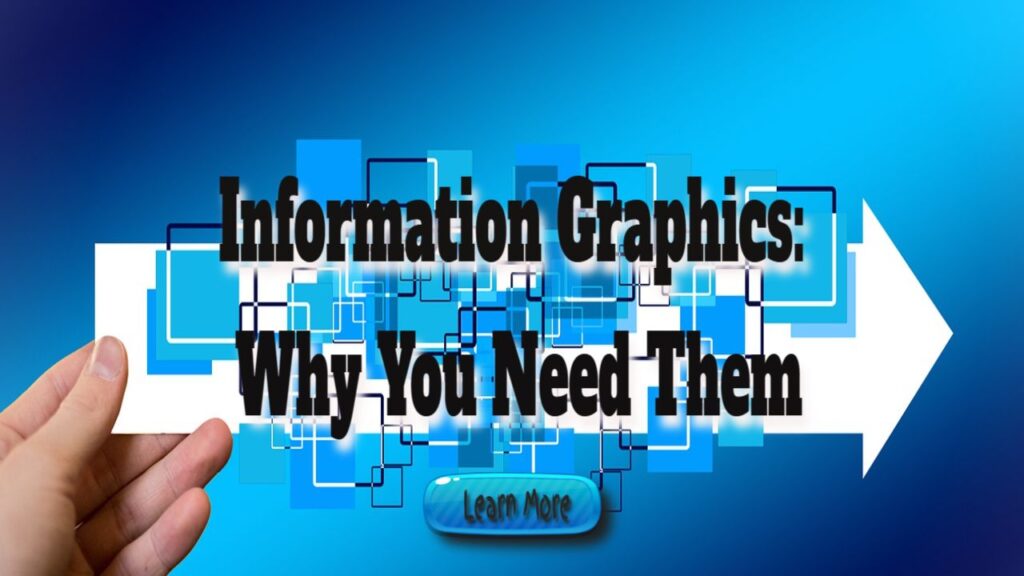Information Graphics: Why You Need Them
Information Graphics: Why You Need Them: The benefits of infographic design have convinced many marketers to include them in their marketing strategies.
High interaction, increased conversion, and positive social sharing are three of an infographic's most valued marketing benefits.
According to recent research from the University of Pennsylvania's prestigious Wharton School of Business, 67% of audience members are more likely to accept the validity of a presentation's claims when visuals support those claims.
Those who used visual language during their presentations were the most effective presenters.
Do you want to use infographics as part of your marketing strategy? If this is the case, you should first comprehend why infographics are so powerful.
If you understand the benefits of utilizing infographics, you are more likely to produce infographics that capitalize on those benefits.. A visual marketing agency can assist you in implementing an infographic strategy.
What are the advantages of using infographics?
In 2012, it seemed like every brand was creating infographics. Most of them were created by inexperienced designers and did little to compel audiences to act. Anyone can create an infographic. Choosing the right colours, fonts, graphics, and animations is essential for creating an infographic that moves the audience and inspires them to act.
2D and 3D animations can create interactive infographics that bring the content to life. We recommend working with a visual marketing agency to help you realise your vision.
Infographics are popular.
One of the most essential advantages of infographics is the positive reactions they elicit. When it comes to learning, paying attention, and retaining knowledge, everyone knows that looking at pictures and graphics is more exciting than reading plain text.
Our brains prefer visual content because it is easier to process because we are visual creatures. According to scientific evidence, when information is presented visually, the brain remembers much more of it.
Images are processed 90,000 times faster than text and have a 40% faster response time.
The key to receiving high ratings is to present the audience with exciting information in an understandable format.
This is made simple by the use of infographics. Consider the following. Would you instead read a 10,000-word blog post or watch an infographic with images and animation that conveys the same information? An infographic will almost always be your first choice.
A lengthy blog post is unlikely to be read in 20 minutes by your target audience. However, they only have two minutes to absorb the same information presented in an infographic.
Customers prefer marketing advertising that includes a narrative element. When you tell a good story, you can convey your brand's personality while connecting emotionally with your audience.
Evoking emotion in your audience will make them feel more connected to your message, whether it's a marketing message or not.
Telling a story engages your audience, especially if it ends on a cliffhanger. Your audience will eagerly respond to your request for more information.
Websites that link to your infographic are likely interested in your story. They are unconcerned with flawless design. If the infographic lacks rich content and a compelling story, you've squandered your time and money.
Ideal for link building
Infographics have long been recognised as an effective link-building tool. Infographics are popular among journalists and news organisations.
They can create their own story by quickly scanning an infographic rather than reading an in-depth blog post. Many news outlets do not even publish the actual infographic when writing a story about it.
They create their infographic, including images and graphics, and credit the original infographic. In any case, backlinking increases the credibility of your website in the eyes of Google and other search engines.
But now comes the tricky part. Previously, nearly every infographic received a significant number of links. However, the quality of infographics has improved dramatically over time.
To increase the SEO value of your brand, you must devote significant time (and money) to obtaining high-quality backlinks for your infographics.
What kind of time and financial commitment are we talking about here? It all depends on the circumstances. Do you have the information you want to include in the infographic already?
If this is true, the amount of research needed to create the infographic will be drastically reduced. This alone can cut the cost of creating an infographic in half.
The post Information Graphics: Why You Need Them appeared first on https://gqcentral.co.uk


Comments are closed